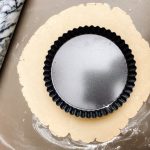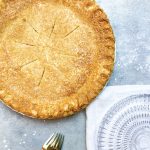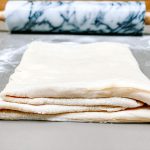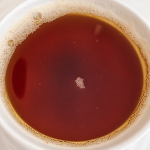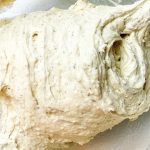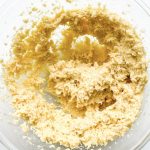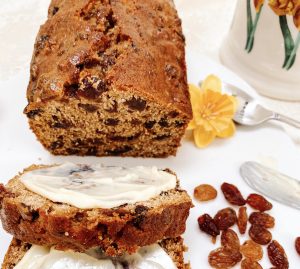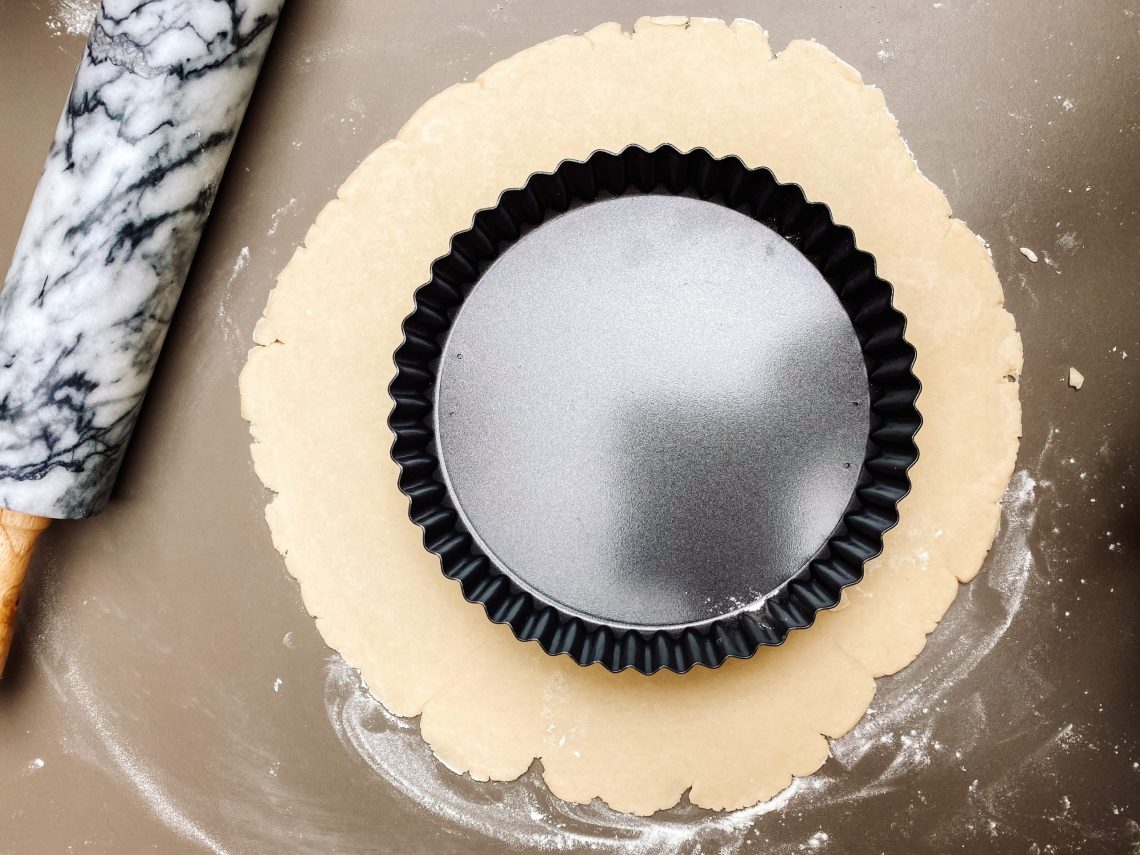
Shortcrust Pastry
Buttery, flaky and melt in the mouth, this pastry is ideal for sweet or savoury dishes. It is made in a flash (using a food processor or by hand) and it freezes well, either before cooking or after. Shortcrust pastry is most commonly used in pies an tarts.
Truth be told, I have had a few disasters making pastry over the years and confess I do sometimes resort to ready rolled shop bought, particularly if I need puff pastry. Shortcrust and sweet shortcrust pastries, however, are really quite easy, you just need to remember a few basic tricks.
When reading about making shortcrust pastry, guidance consistently tells us not to handle the dough too much, not to add too much water and keep everything as cold as possible. Both too much handling and too much water will make the pastry ‘tough’ and ‘chewy’ and we are looking to create ‘short’, buttery, flaky and melt in the mouth pastry. If the ingredients get too warm, the butter may melt or soften too much and your pastry will be oily and greasy.
How to make Shortcrust Pastry
This classic recipe is typically made from:
- plain/all-purpose flour plus a little salt
- fat – both butter and lard
- ice cold water to mix
My recipe:
- I have included some baking powder. This helps the pastry rise just a little when cooking and this to helps give it its flaky texture. If you replace the plain flour with self raising flour, then you should omit the baking powder. This is not a classic addition, so feel free to miss it out, if you prefer
- butter and lard – a lot of recipes state half butter and half lard. I use ⅔ butter and ⅓ lard. I love the flavour that butter brings to the pastry and you still have the ‘shortening’ effect of the lard. It is up to you what butter/lard ratio you choose, you could even use 100% butter and of course you can replace the lard with vegetable shortening.
- when you first start making pastry, it is hard to know when you have added enough water. Practice makes perfect, but as a guide, I find that 4 x 15ml tablespoons of ice cold water is sufficient for the quantities in the recipe below. If you are scaling the recipe up or down, this means that for every 100g flour, you need roughly 20ml or 4 teaspoons water.
Food processor or by hand?
This pastry can be made in a food processor or by hand; I have made it both ways but tend to choose the food processor. Using a food processor is not just quicker, it has the added benefit of ensuring everything stays as cold as possible – no warm hands warming the butter and lard up! I also find that adding the water is easier in the food processor as it adds it more throughly and hence reduces the risk of adding too much water.
That said, I know a lot of people much prefer to make pastry by hand and find the whole process quite cathartic. As ever – your choice, but if you are new to pastry making and have a food processor, I would use it and progress to making it by hand once you have some experience under your belt.
Method:
The process is very simple:
- either using the pulse function on your food processor or using your fingertips, rub the fat into the flour until they resemble fine bread crumbs
- slowly add the ice cold water until the mixture just comes together.
- take out of the food processor or mixing bowl and push (rather than knead) very gently with your hands to bring the dough together. Kneading stretches the gluten in the flour and will make your pastry tough, so handle it as little possible.
- press into the same shape as you wish to roll the pastry but smaller than the actual size. For example, if you will be rolling it to line a 20cm/8 inch round pastry dish, shape into a 15cm/6inch round shape.
- Wrap in clingfilm and refrigerate for 30 minutes.
- You will need to refrigerate again when you have rolled out the pastry and lined the tin.
- It is very important not to miss the refrigeration steps out as they help to prevent the pastry from shrinking when cooking.
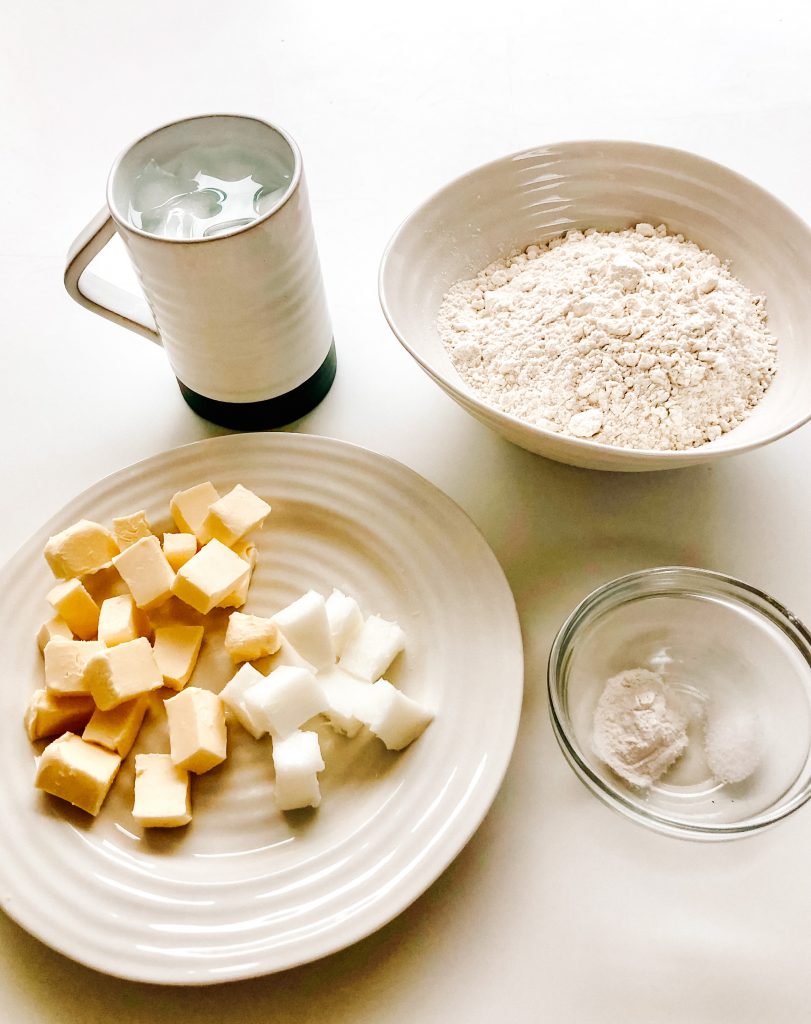
1 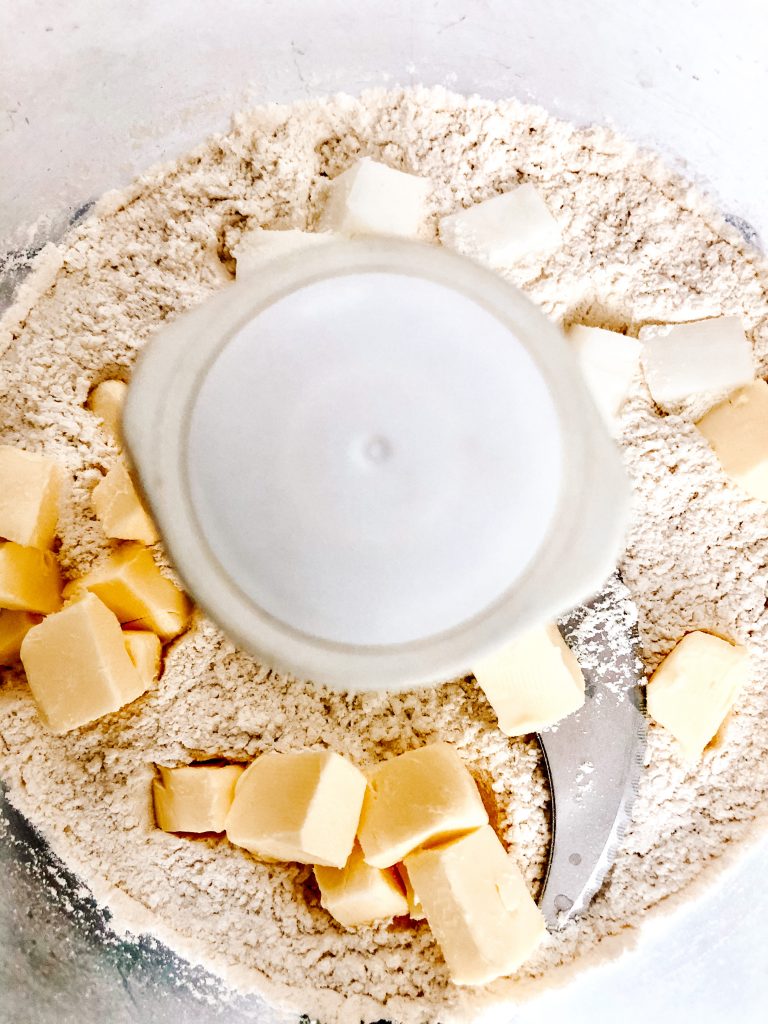
2 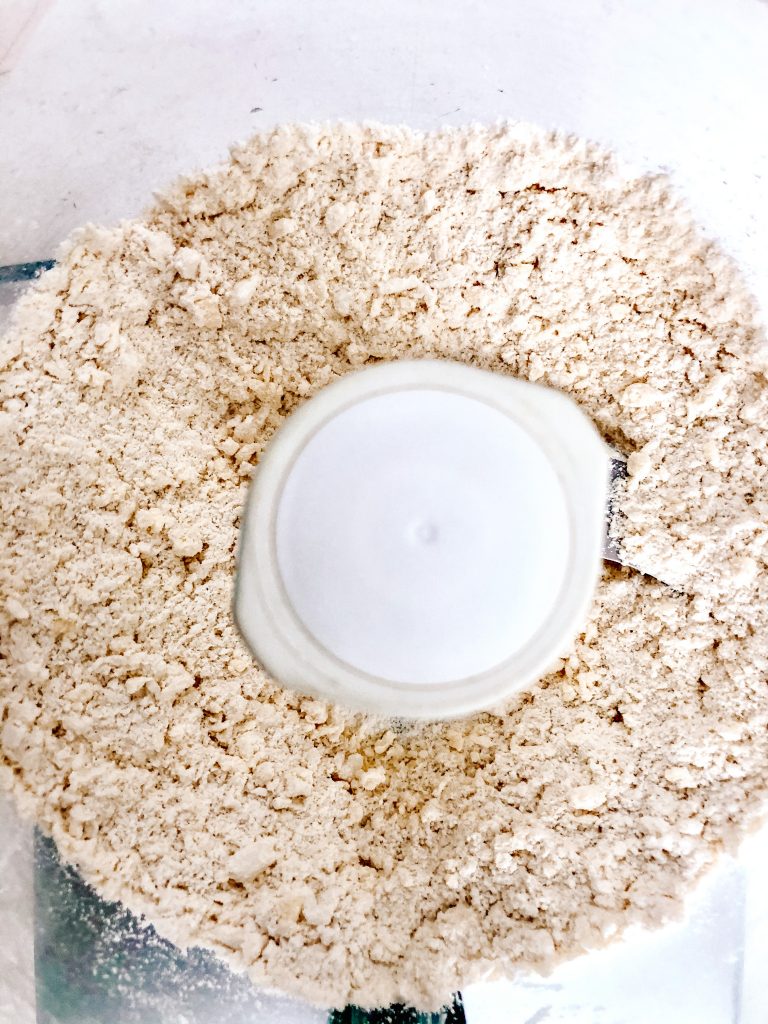
3 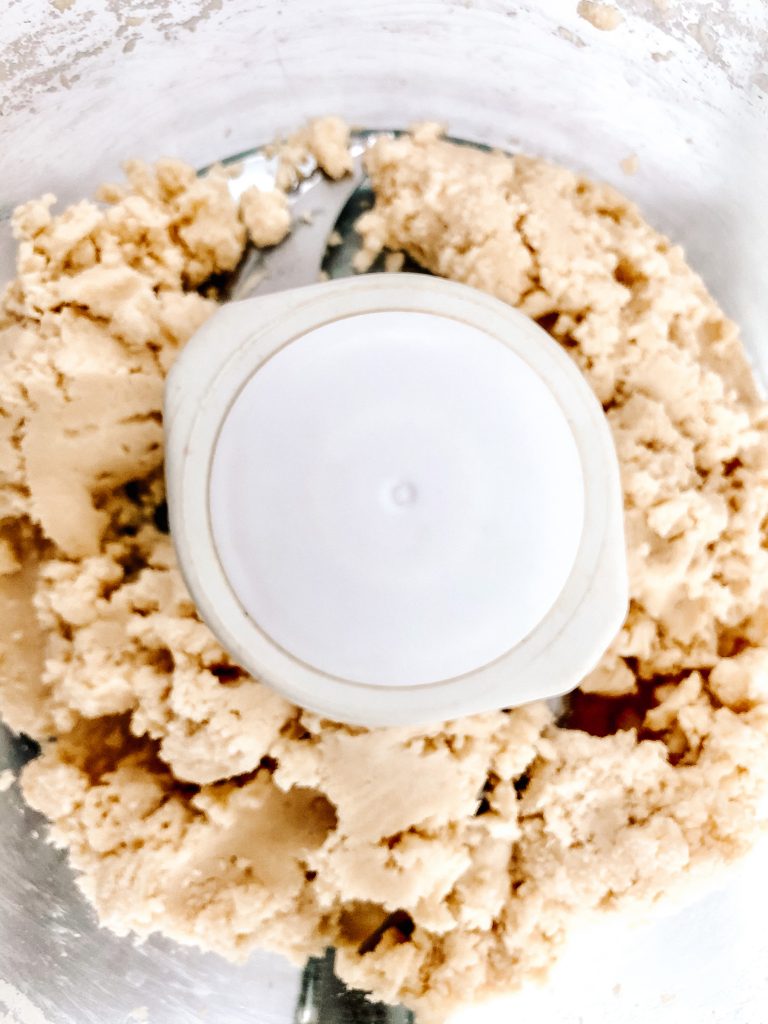
4 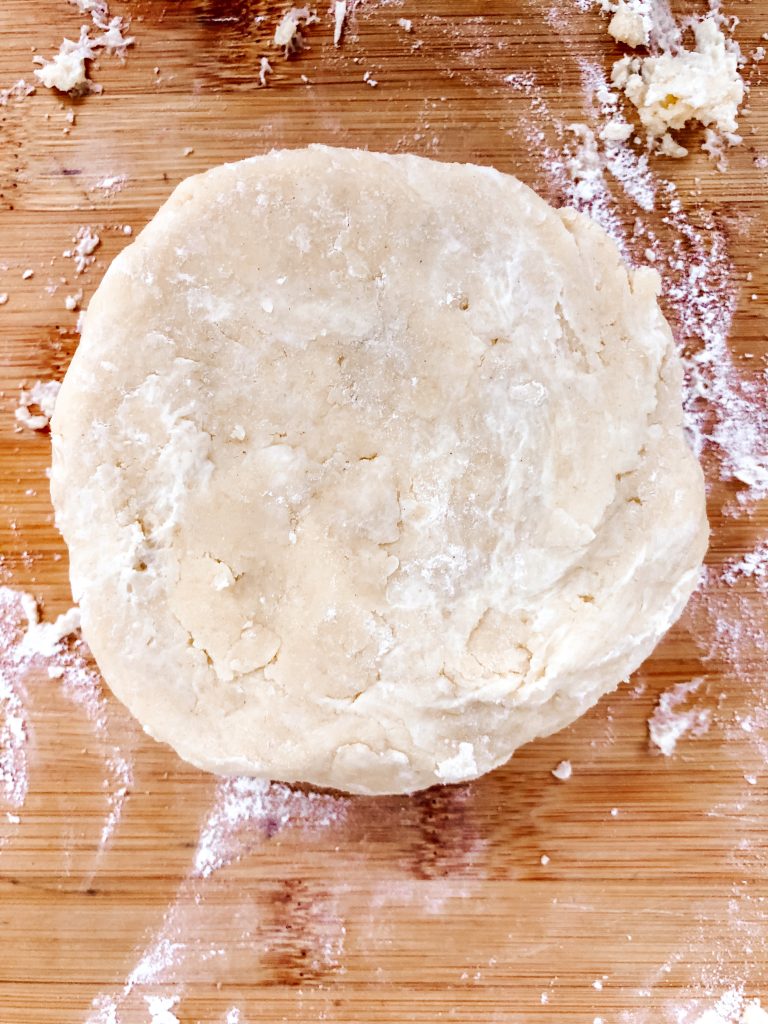
5 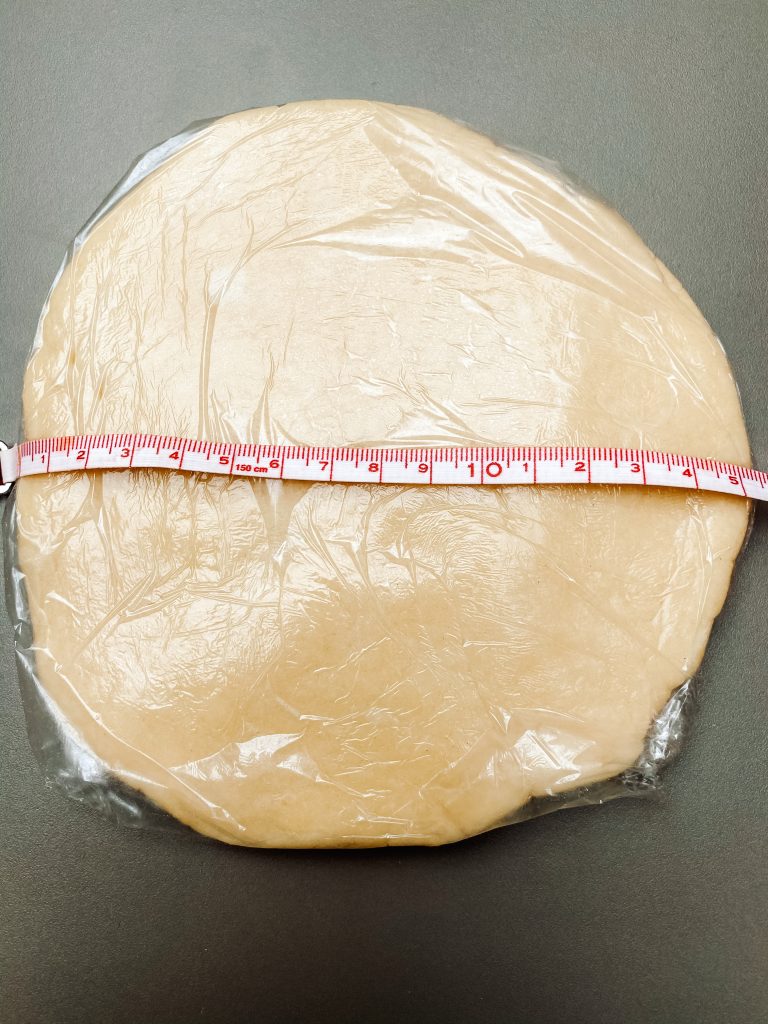
6
Tips on rolling pastry:
- work on a cold and flat surface.
- use a completely flat rolling pin.
- lightly dust the surface, the top the pastry and the rolling pin with flour using a flour shaker.
- put the rolling pin in the middle of the pastry and roll forwards and backwards.
- ¼ turn your pastry and repeat.
- keep repeating at least 4 times or until the pastry is the correct size.
- you may need to re-dust the surface and rolling pin.
- if the pastry is sticking to the work surface, release using a palette knife and re-dust the surface with flour
- if you only roll forwards and backwards and keep doing ¼ turns, in the same direction, your pastry should keep the shape you require and not shrink when cooked.
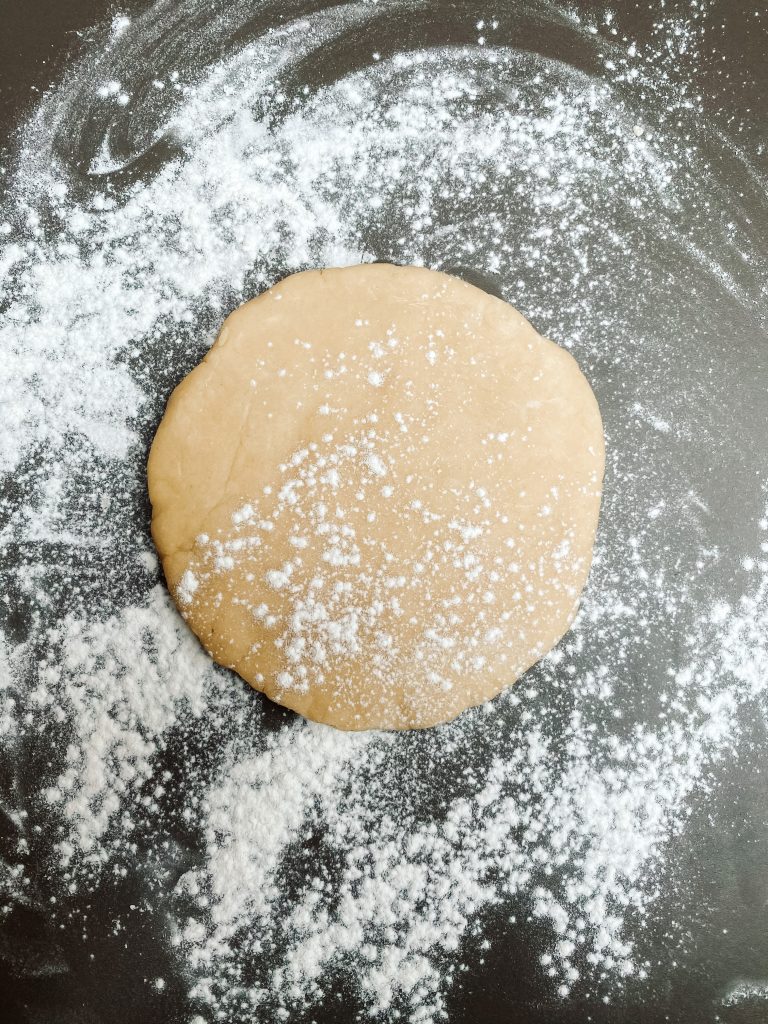
7 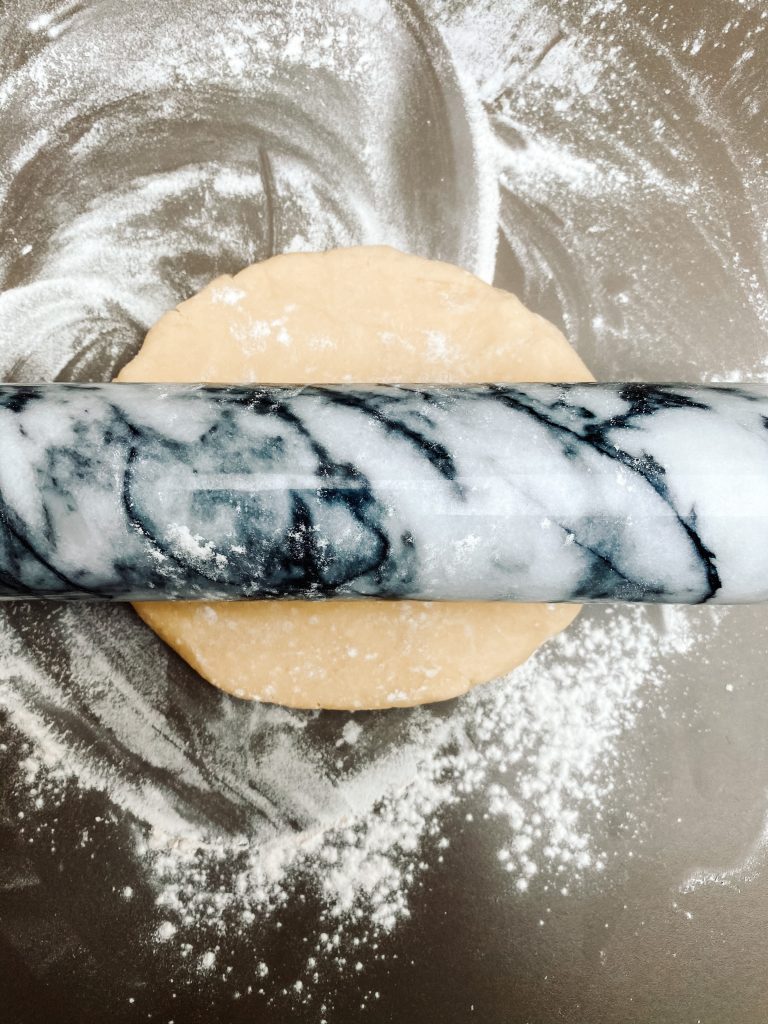
8 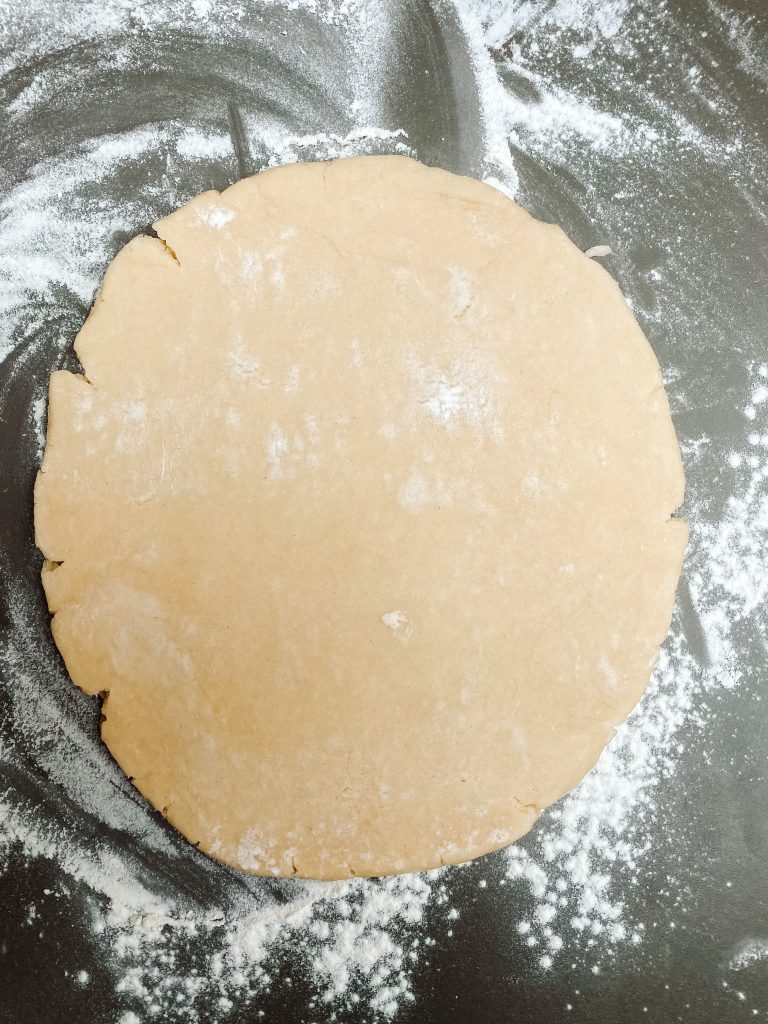
9 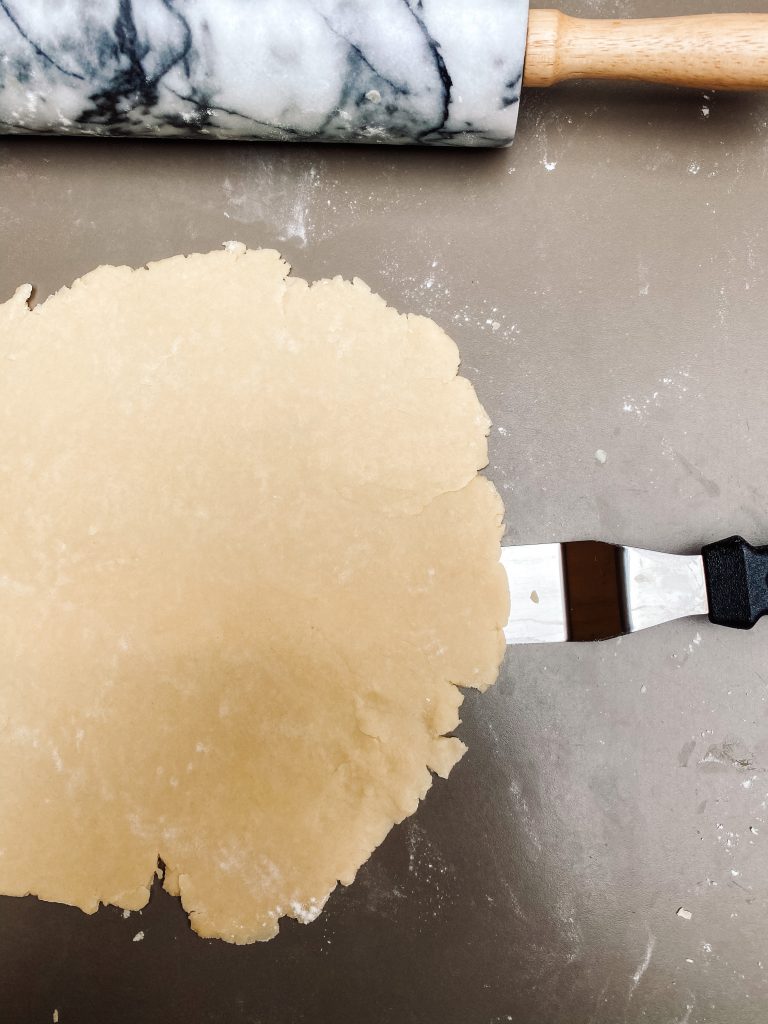
10 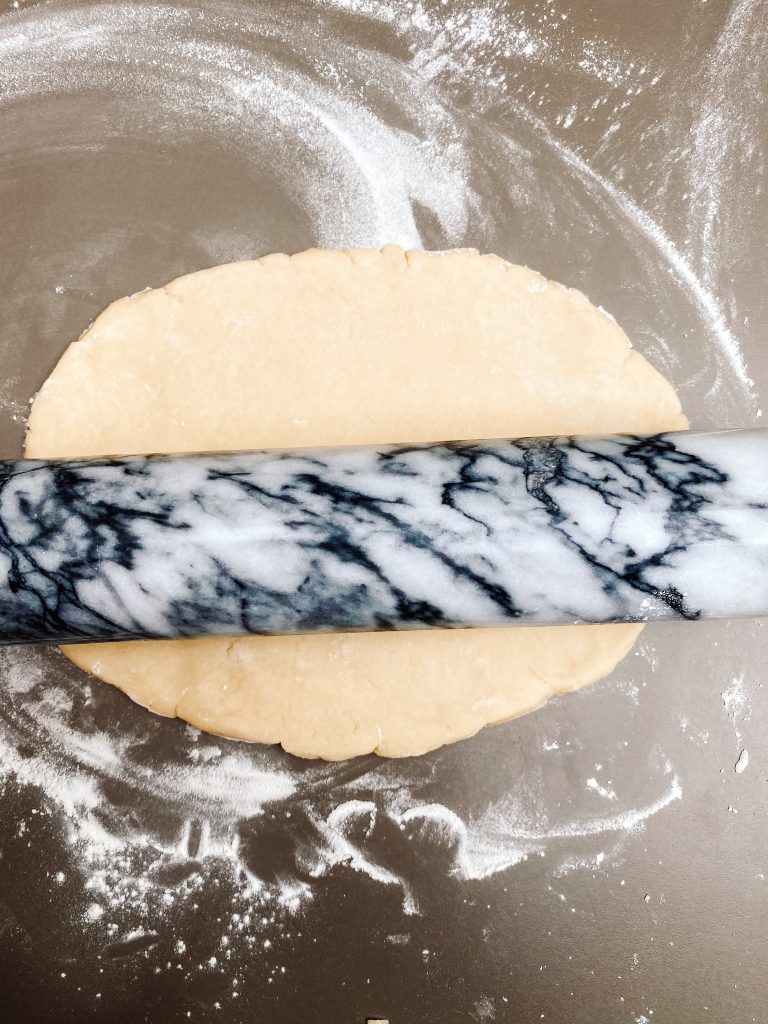
11 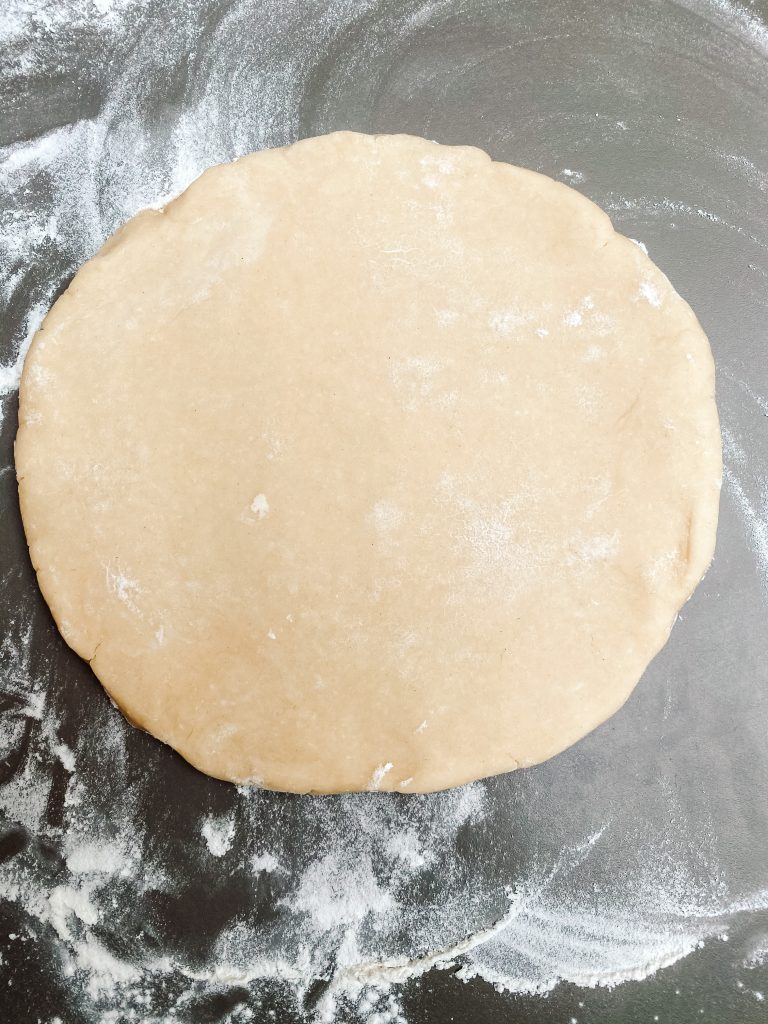
12
Lining a flan tin:
- pastry cooks best in metal tins rather than ceramic or glass. Metal tins do not need to be greased but glass or ceramic should be very lightly greased first.
- use your flan tin as a guide to ensure your pastry is the correct size.
- put the rolling pin about 10cms from the edge of the pastry and roll the 10cms over the rolling pin. Gently roll the rest of the pastry onto the rolling pin.
- lay the pastry over the flan tin and gently unroll so the pastry lies on top.
- very gently, use your fingers to press the pastry into the flan tin ensuring it fits snugly into all the corners and where the base meets the sides, and up the side.
- trim the overhang ensuring that the edges are about 1 cm taller than the side of the flan tin.
- if there are any splits or holes in the pastry, use the cut offs to patch up – I always have one or two areas I have patched! Don’t worry you won’t notice when the pastry is cooked and filled
- prick the base of your pastry lined flan tin with a fork – this will release any trapped air and prevent the pastry from rising whilst cooking.
- put back in the fridge for 60 minutes or in the freezer for 20 minutes before cooking
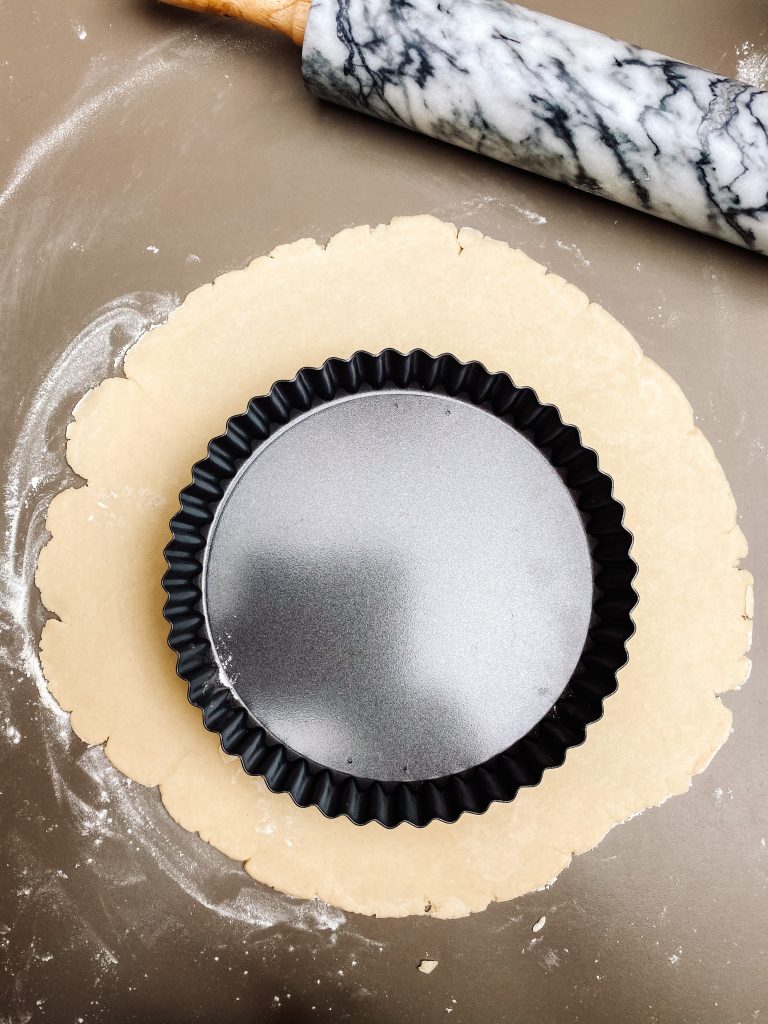
13 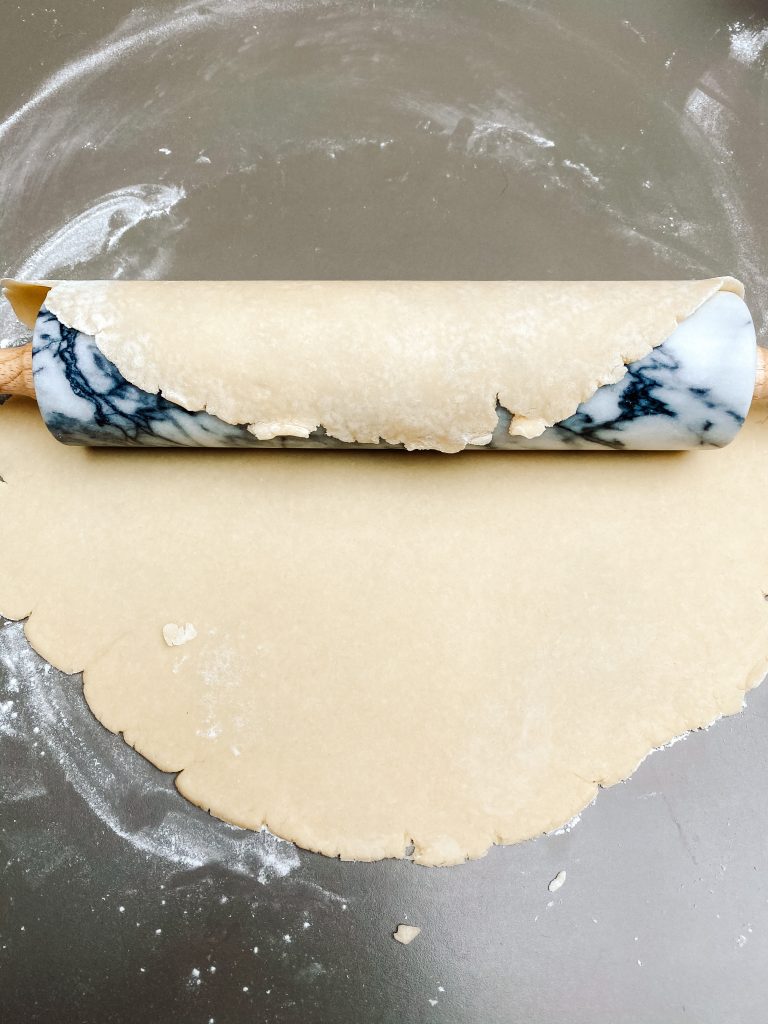
14 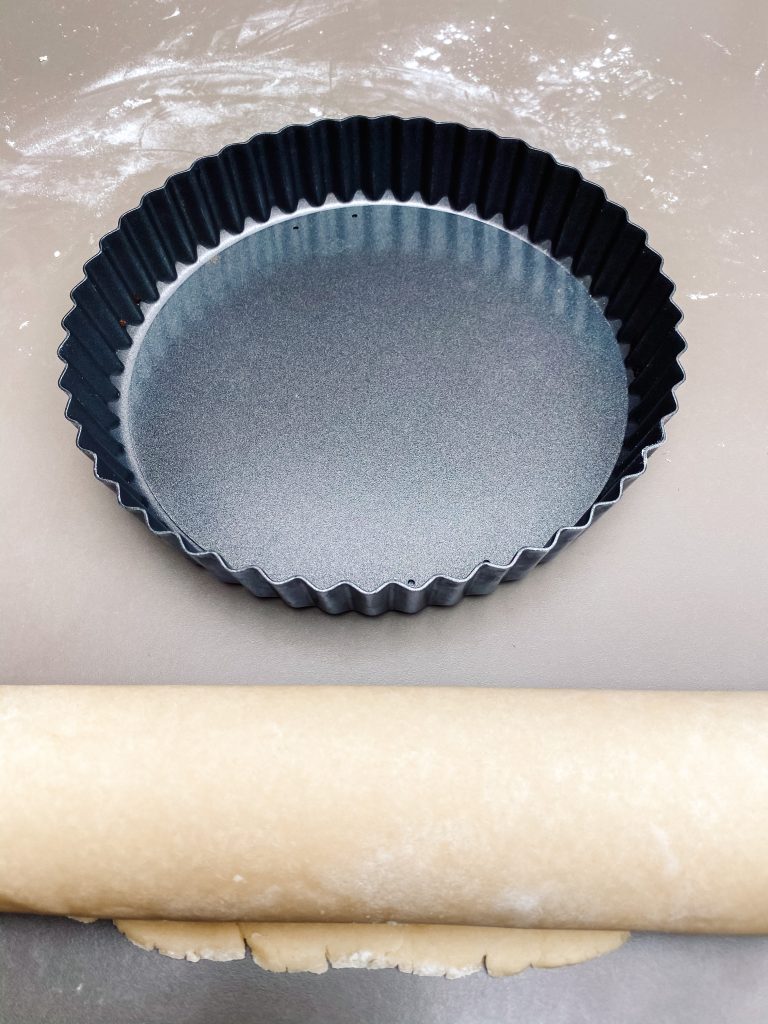
15 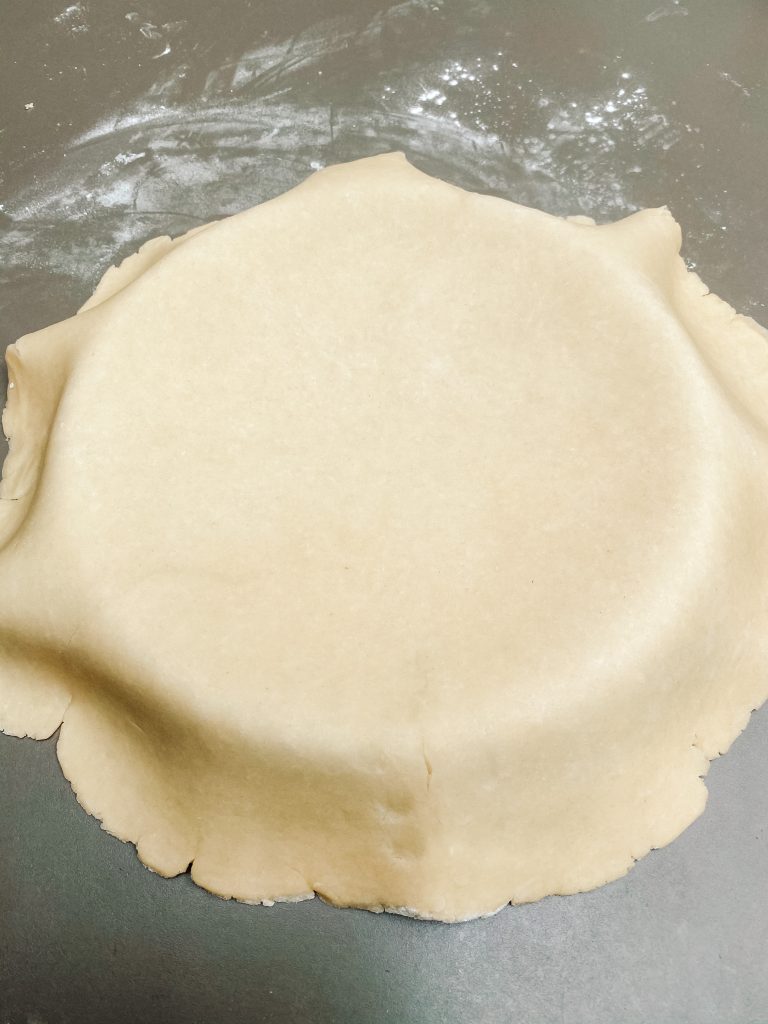
16 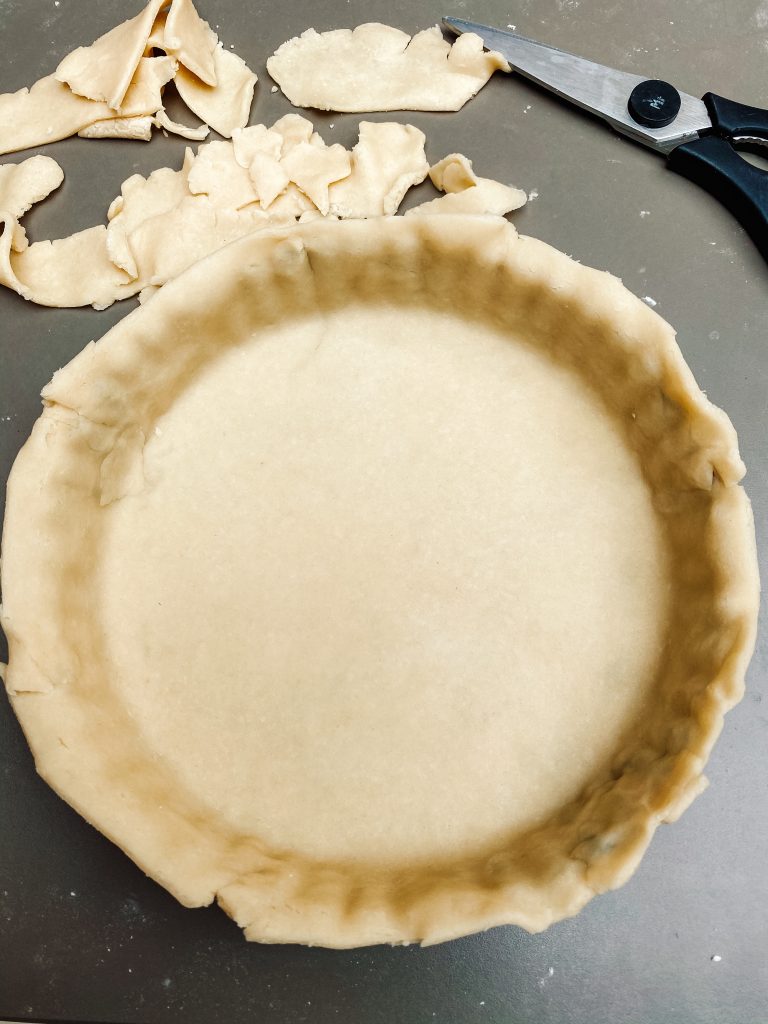
17 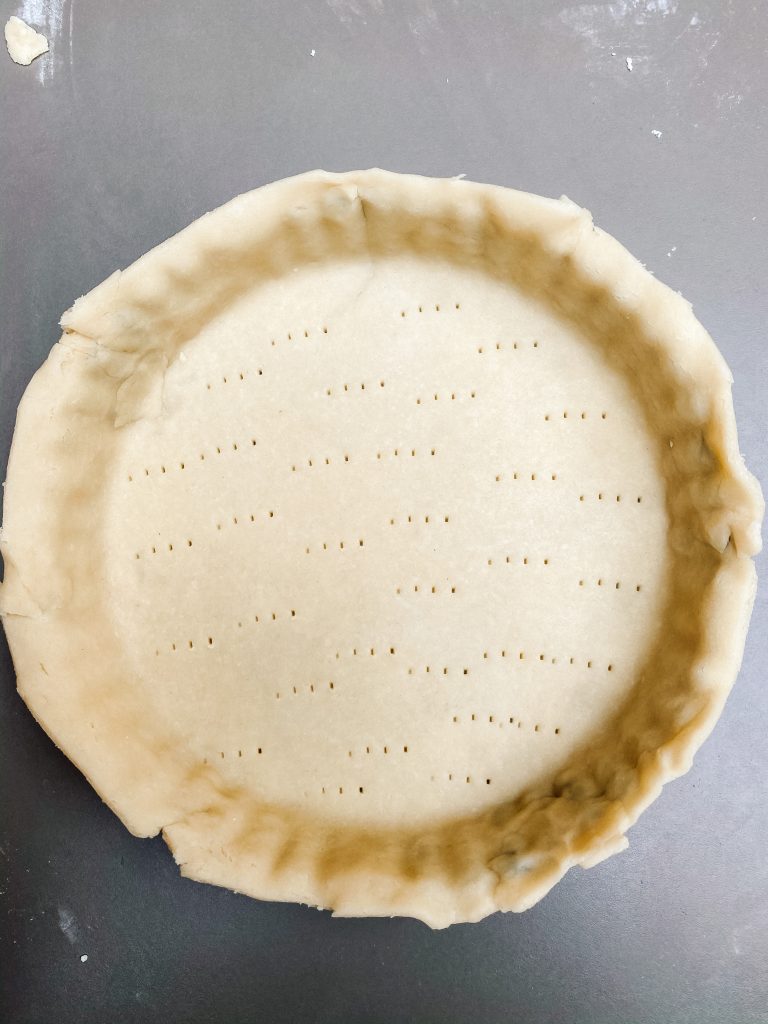
18
Baking the pastry ‘blind’:
This is when you want to cook your pastry without a filling – e.g. for a Lemon Meringue Pie. You will need a beaten egg, as well as the pastry.
- preheat oven to Fan Oven 170°C /190°C/375°F/Gas 5 and put a metal oven tray in the centre of the oven.
- take your pastry case out of the fridge or freezer.
- cut a piece of baking parchment larger than the flan tin, scrunch it up and place inside the flan tin on top of the pastry.
- tip ceramic baking beans into the paper, sufficient to fill the tin. Make sure they are spread evenly in the tin and all the areas of the tin, e.g. edges and corners are filled with the beans.
- put into a preheated oven and cook for 15 minutes.
- after 15 minutes, take out of the oven, carefully lift out the baking parchment and the ceramic beans.
- brush the base and sides of the pastry with a little egg – this will add a protective layer over the pastry and help to ensure that it is crispy after the filling has been added.
- put it back into the oven for a further 5 – 8 minutes to brown and crisp up.
- take out of the oven and use a sharp knife to trim the edges of the cooked pastry against the edge of the flan tin.
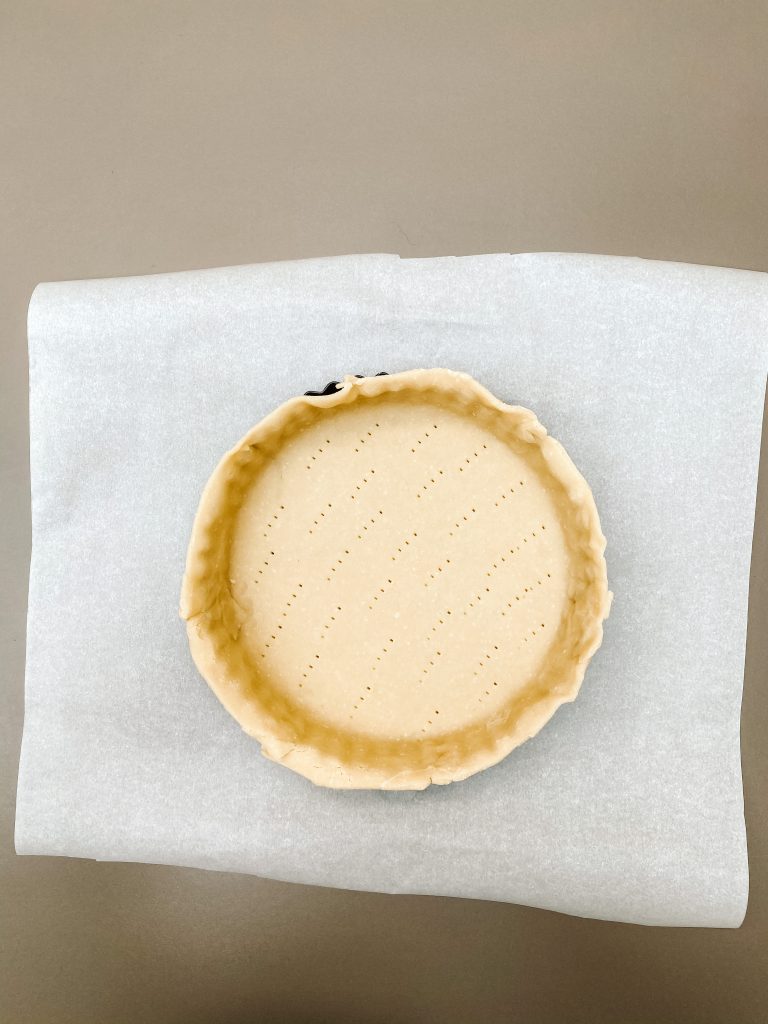
19 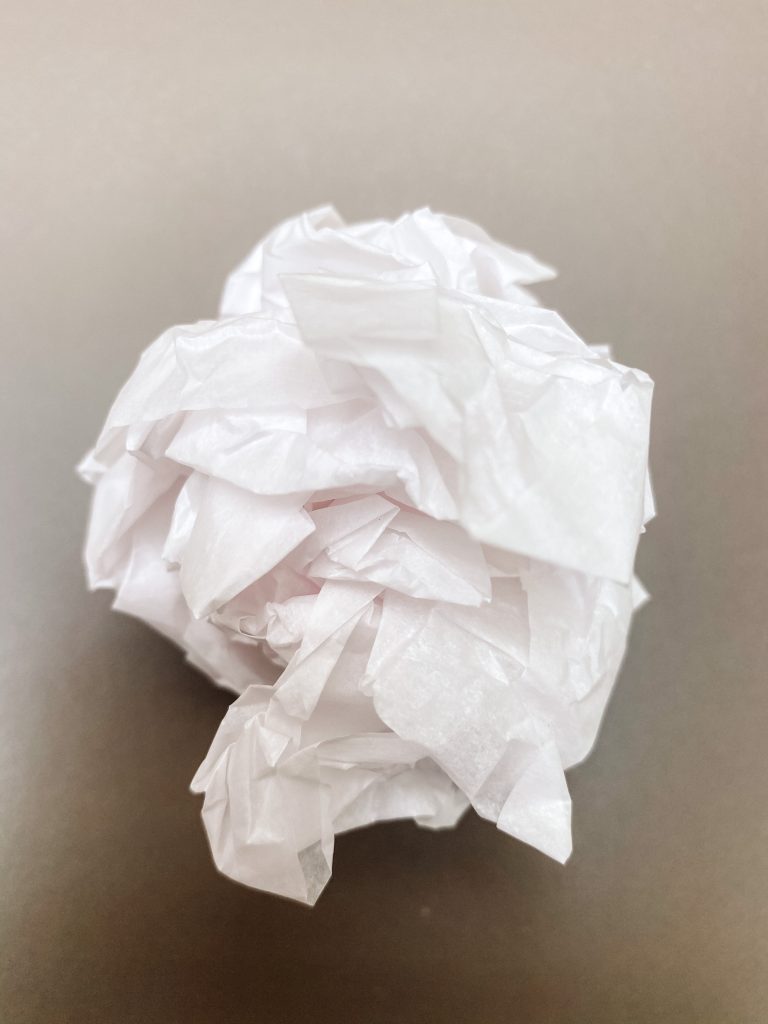
20 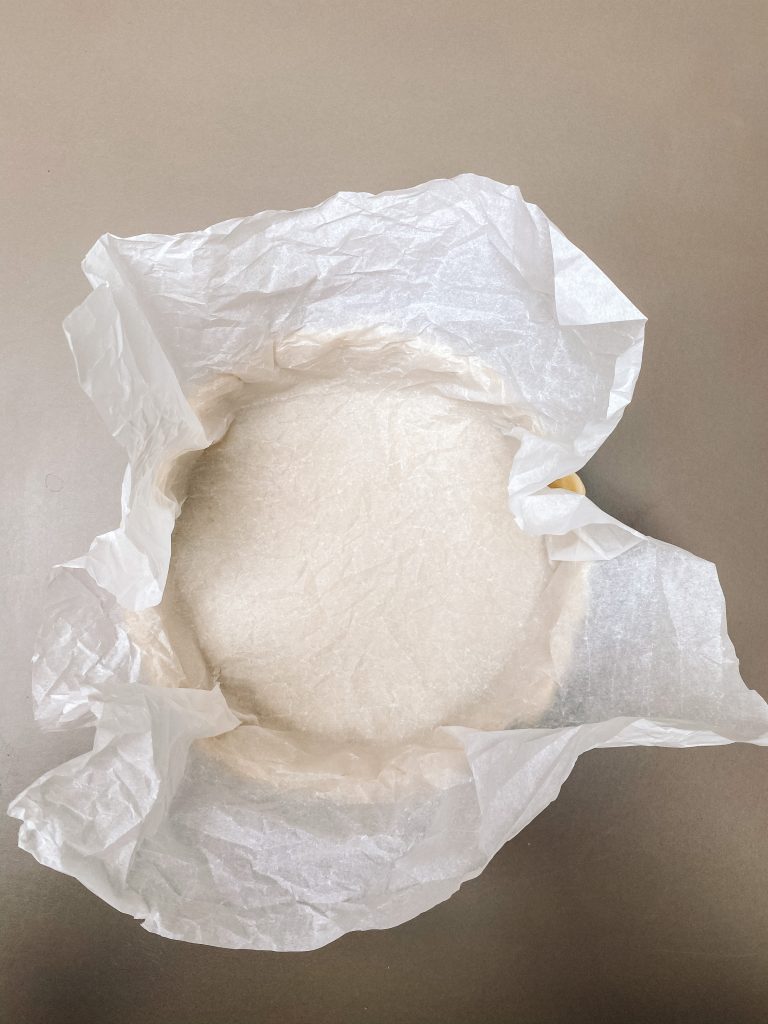
21 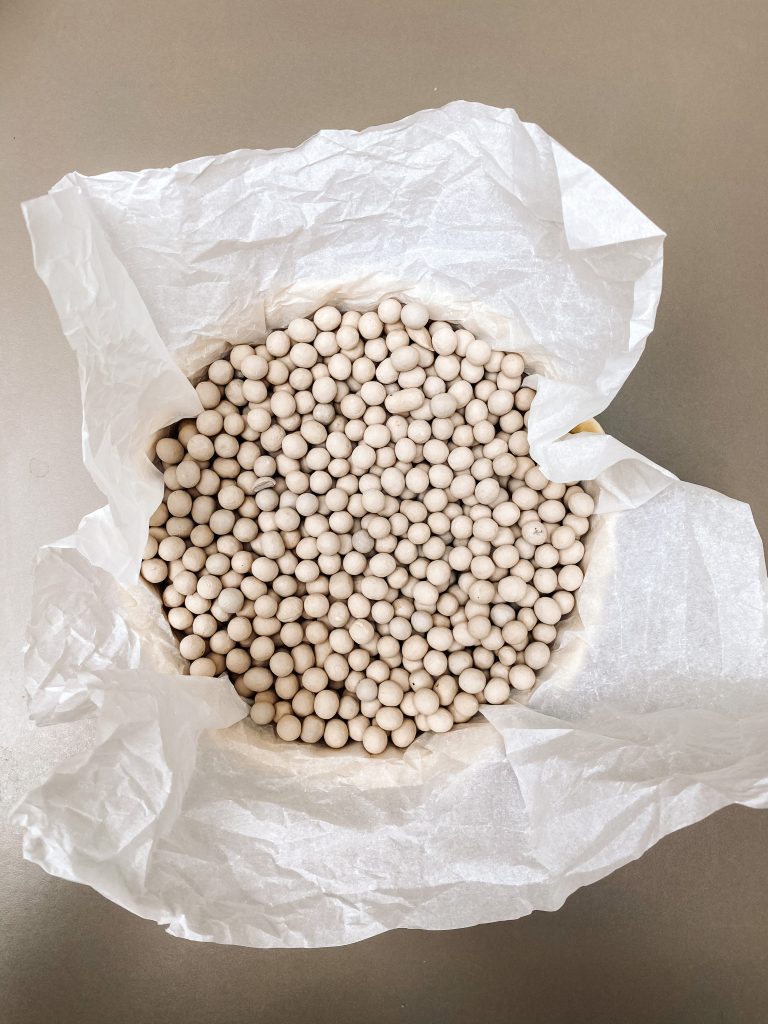
22 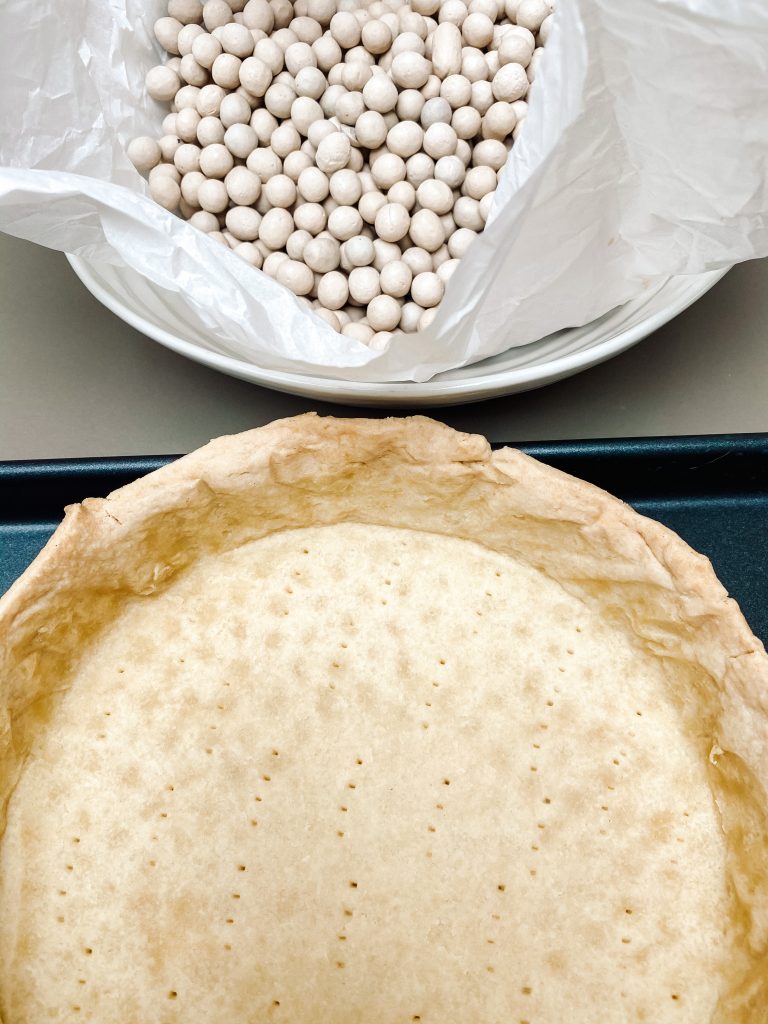
23 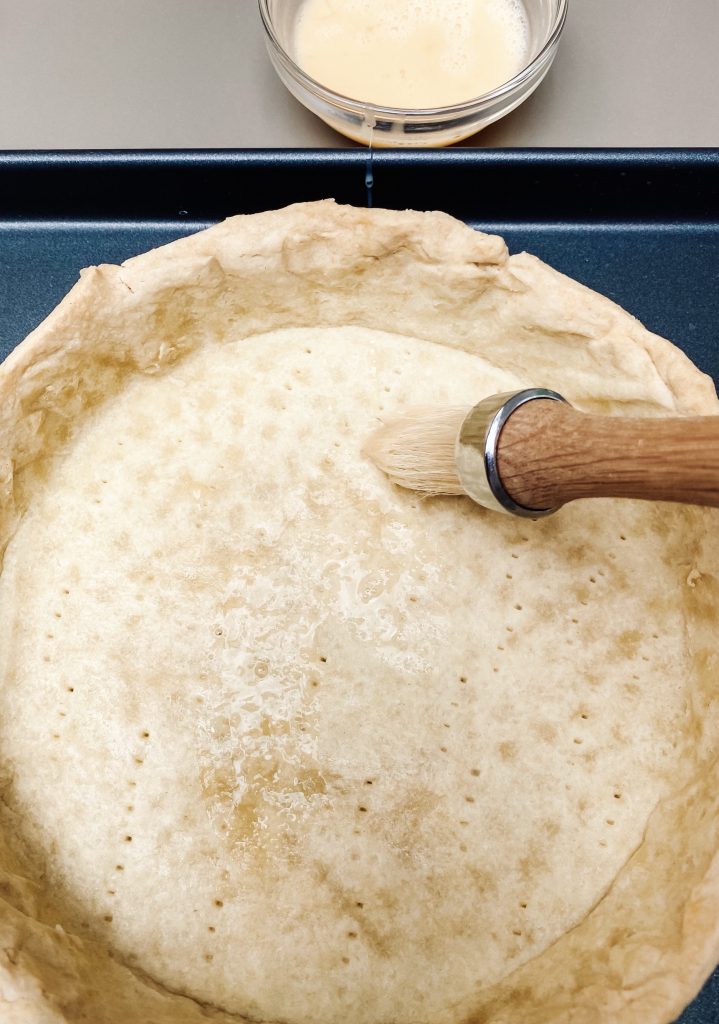
24 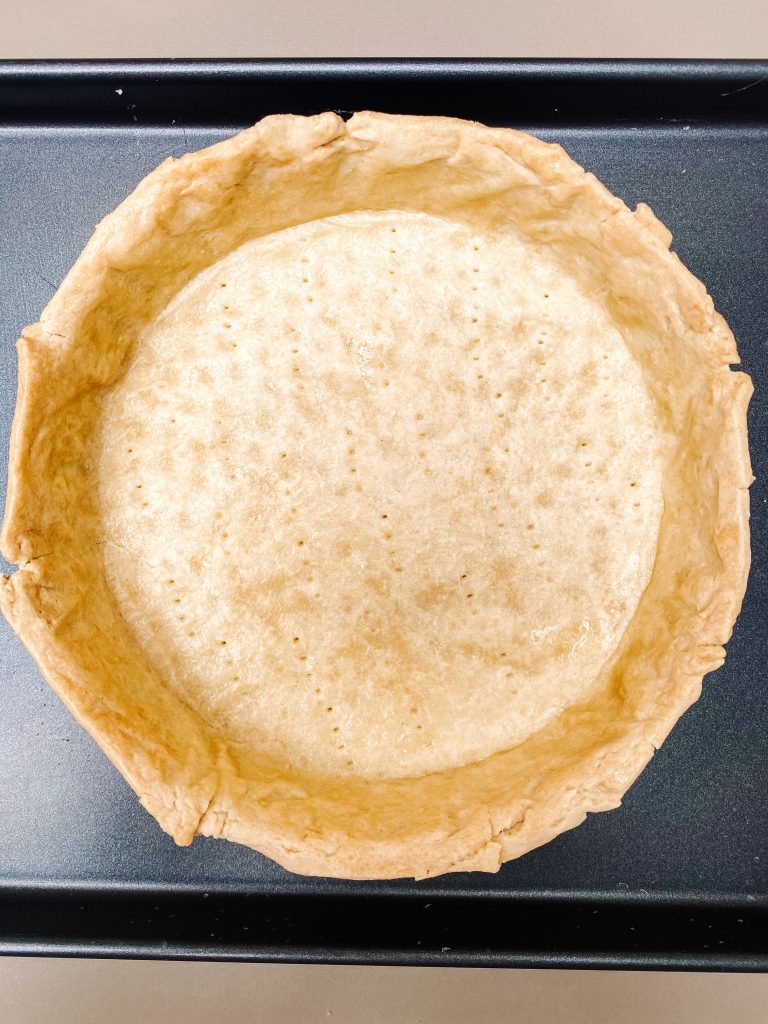
25 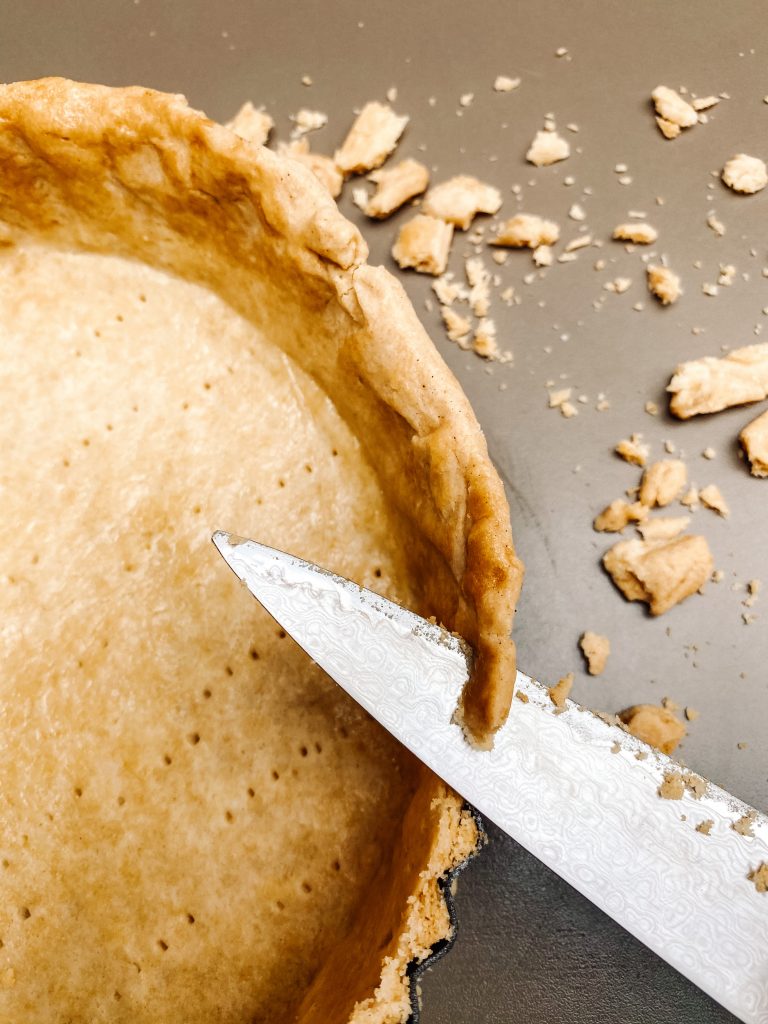
26 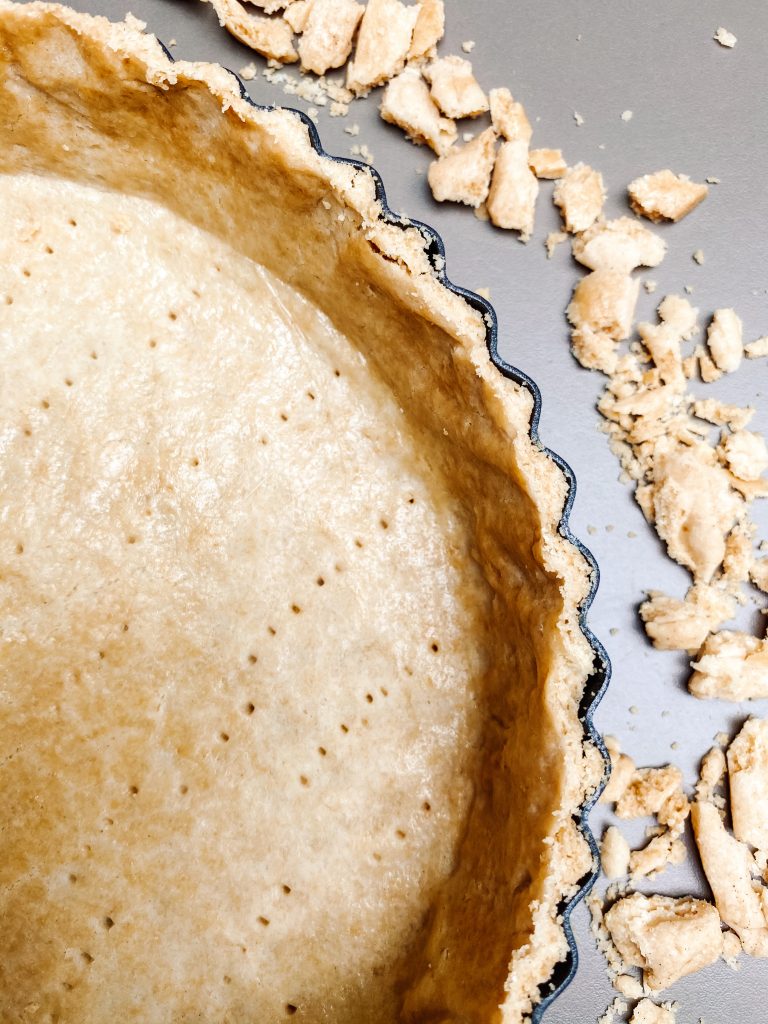
27 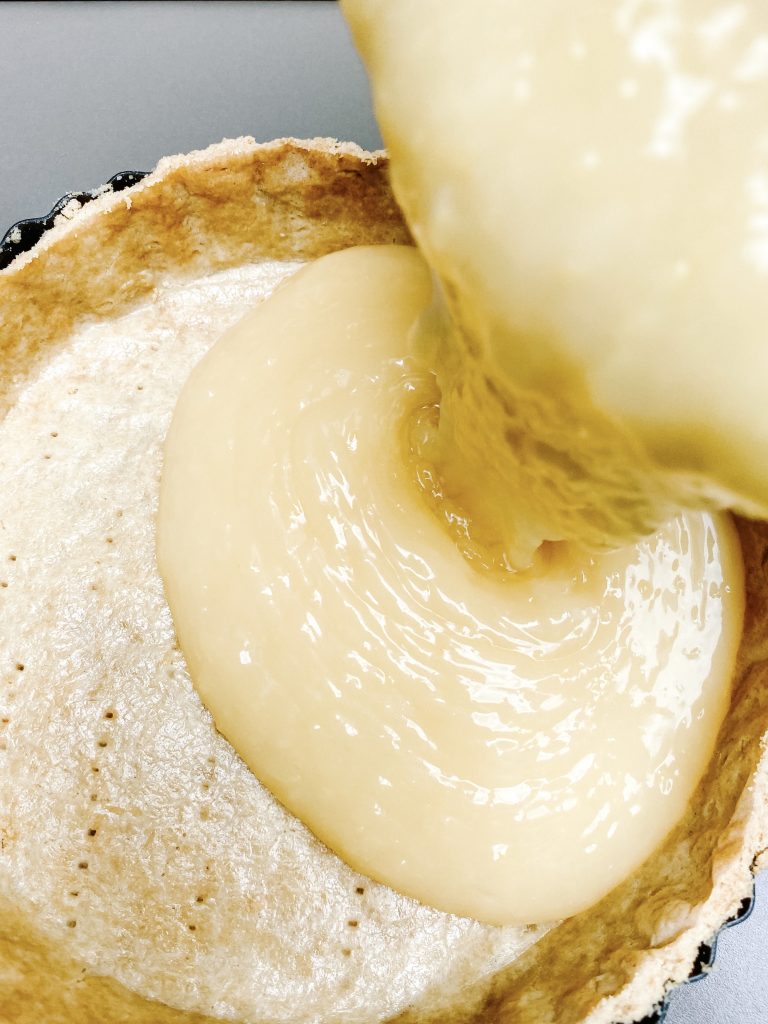
28 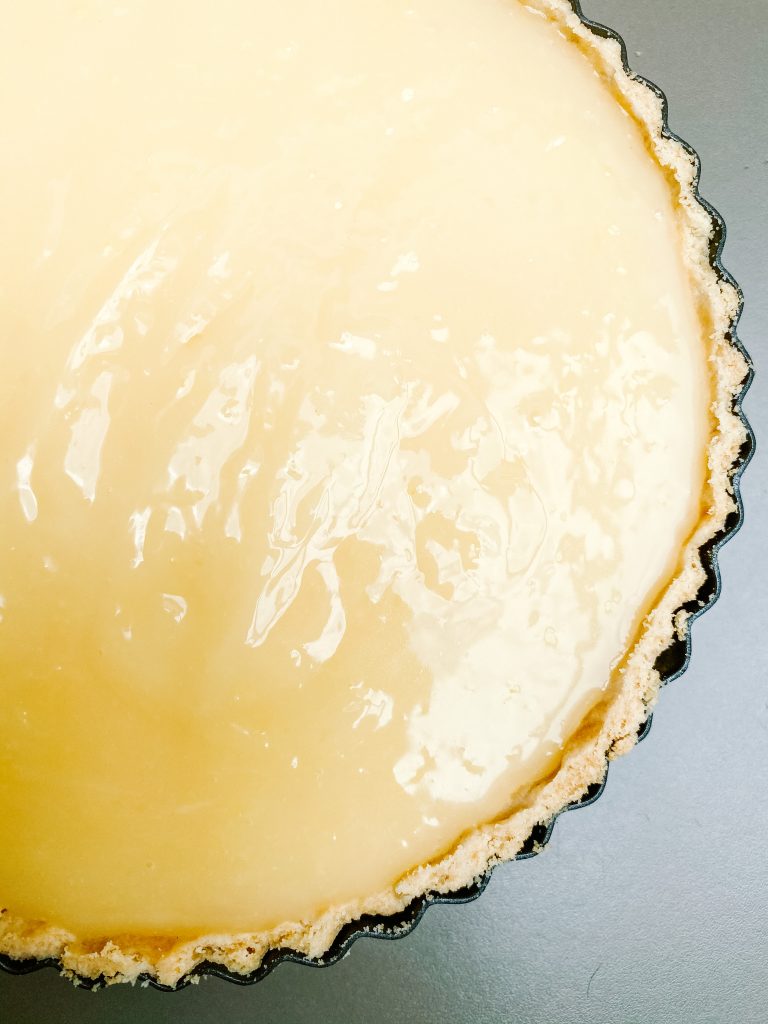
29 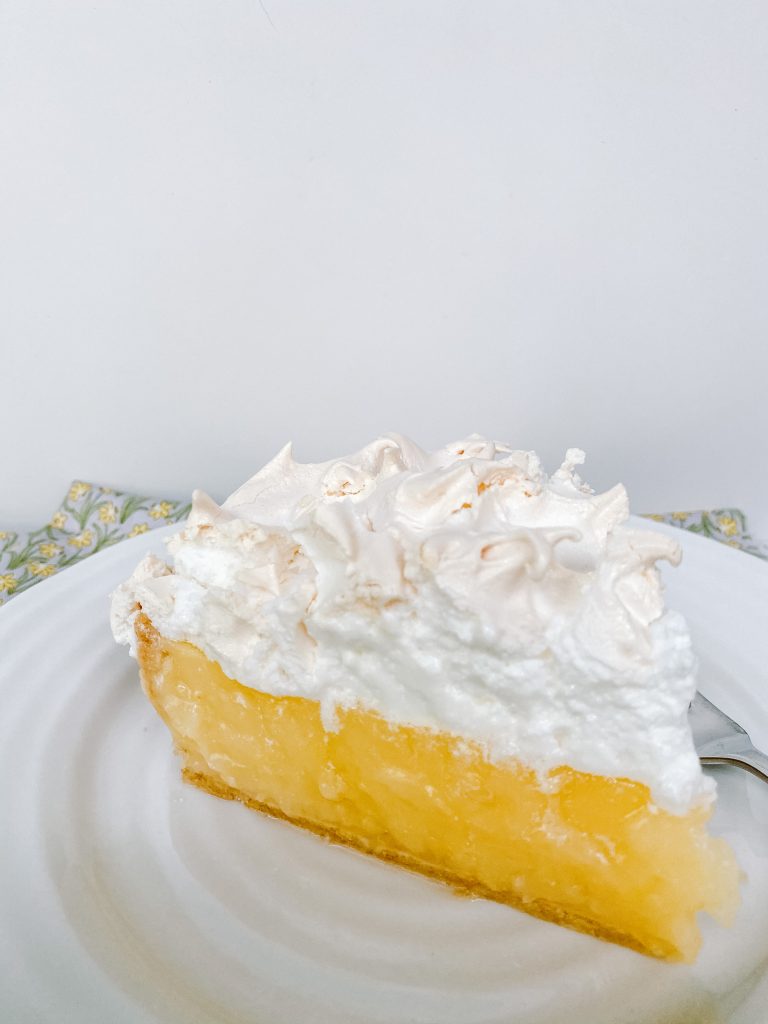
30
Baking the pastry with a filling:
This is when you want to cook your pastry and a filling at the same time such as for a Quiche Lorraine or a Lemon Tart..
- your recipe may well tell you to bake the pastry blind first, as above. However, you do not always need to pre-cook your pastry if:
- your oven has a function on it to heat from the base of the oven only,
- you are cooking your dish in a metal tin
- your filling needs to be cooked for over 20 minutes at a high enough temperature i.e. 180°C/Gas 5 or above
- opening the door of the oven and moving the tin to the middle of the oven from the bottom, will not adversely affect your dish
- line your metal flan tin with pastry as described above and put it in the freezer/fridge for 30 – 60 minutes.
- preheat oven to 200°C/400°F/Gas 6 heat from the base of the oven only and not fan.
- put a metal oven tray on the lowest rung of the oven and leave to heat up.
- after the lined flan tin has rested in the fridge, fill with your chosen filling.
- use a sharp knife to trim the edges of the raw pastry against the edge of the flan tin
- put in the oven on the oven tray on the lowest rung of the oven, for 10 minutes.
- after 10 minutes, change the temperature of the oven to whatever temperature and whatever mode stated in your recipe.
- if possible, move to the centre of the oven to continue cooking
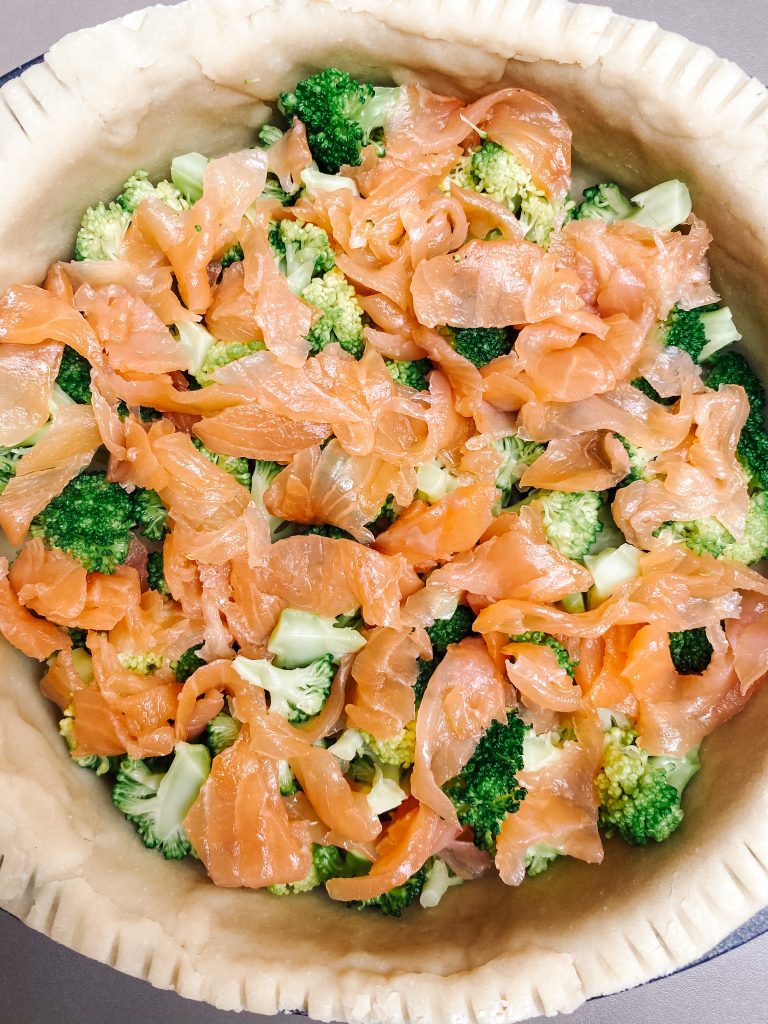
31 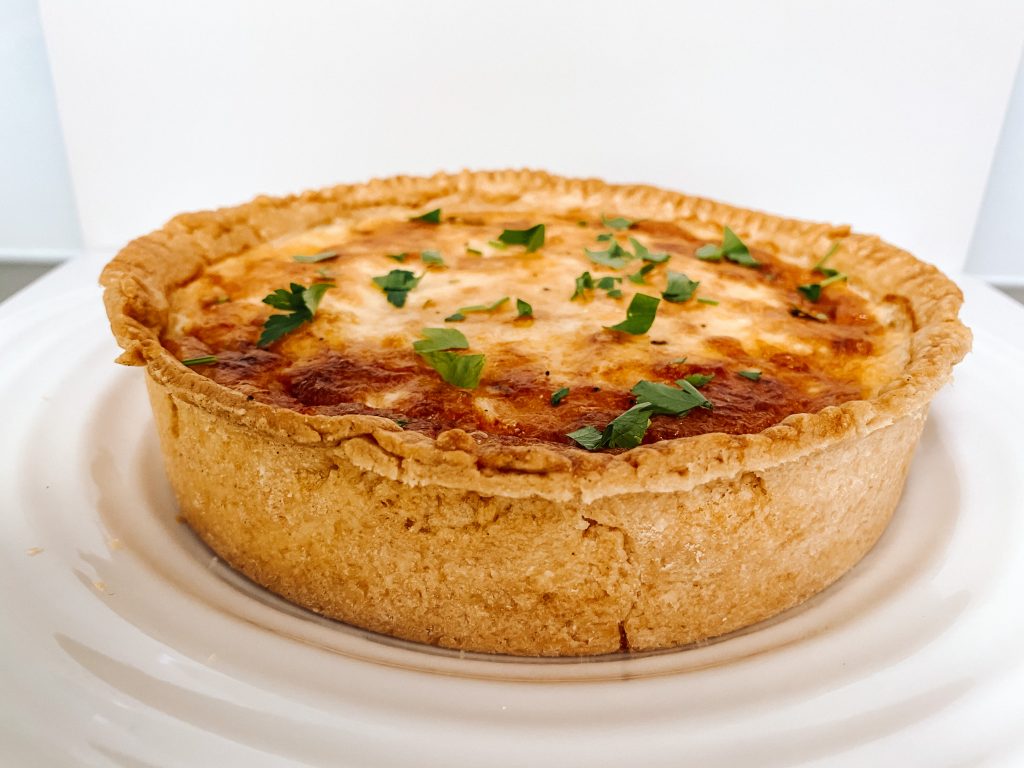
32 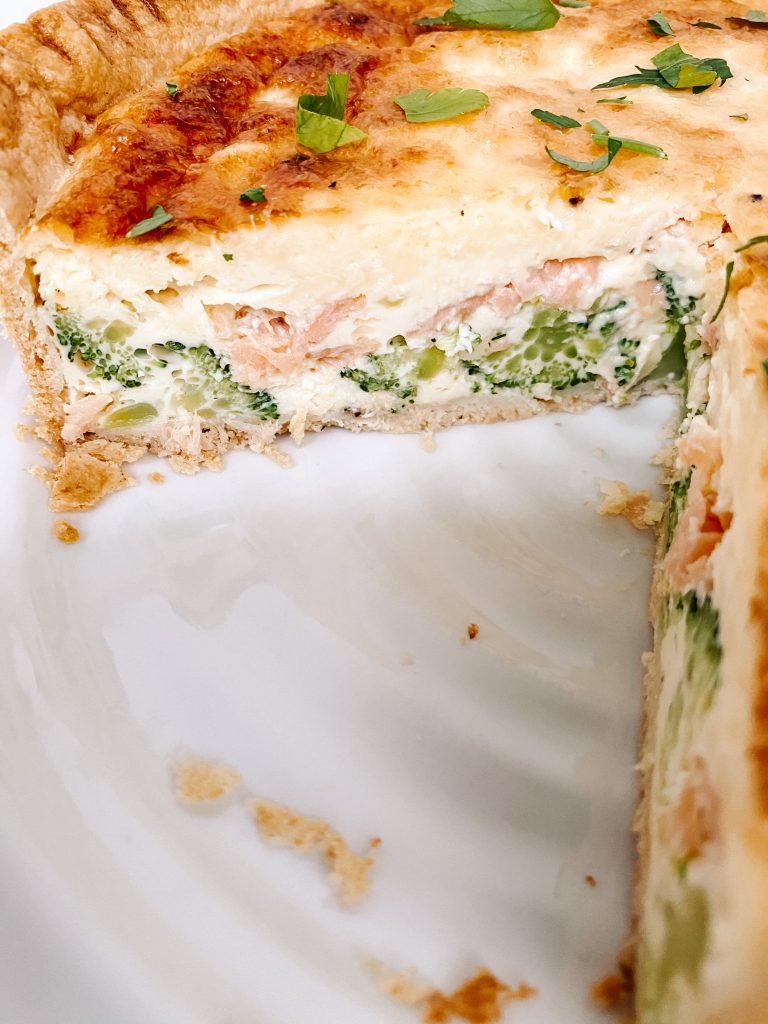
33
Made this recipe?
If you make this recipe, do please tag me on instagram @daffodil_kitchen. You could also leave a comment in the box directly below the recipe.
Shortcrust Pastry
Buttery, flaky and melt in the mouth, this pastry is ideal for sweet or savoury dishes. It is made in a flash (using a food processor or by hand) and it freezes well, either before cooking or after. Shortcrust pastry is most commonly used in pies and tarts.
Ingredients
- 300g plain/all-purpose flour
- 1 teaspoon baking powder
- ¼ teaspoon fine salt
- 100g unsalted butter, fridge cold and cut into small cubes
- 50g lard or vegetable shortening, fridge cold and cut into small cubes
- roughly 60m-75ml/4 – 5 tablespoons iced water
Instructions
Food processor method:
-
Put the flour, baking powder and salt into the food processor and pulse to combine.
-
Add the butter and lard to the flour and pulse until it resembles fine breadcrumbs.
-
Add the water gradually and pulse until it nearly all comes together.
-
Take out of the food processor and push very gently with your hands to bring together.
-
Press into the same shape as you wish to roll the pastry but smaller than the actual size. For example, if you will be rolling it out to line a 20cm/8 inch round pastry dish, shape into a 15cm/6inch round shape. Wrap in clingfilm and refrigerate for 30 minutes.
By hand:
-
Put a sieve over the mixing bowl, add the flour, baking powder and salt to the sieve and, from a height, gently shake the sieve so the flour goes into the bowl.
-
Add the butter and lard to the flour and using your fingertips, lightly rub the fats into the flour until it resembles fine breadcrumbs. Lift the mixture up as you do this to help incorporate air into the mixture
-
Add the water gradually using a knife to incorporate it into the flour mixture. Stop when it nearly all comes together.
-
Take out of the bowl and knead very gently with your hands to bring together.
-
Press into the same shape as you wish to roll the pastry but smaller than the actual size. For example, if you will be rolling it out to line a 20cm/8 inch round pastry dish, shape into a 15cm/6inch round shape. Wrap in clingfilm and refrigerate for 30 minutes.
Recipe Notes
Equipment
- kitchen scales and measuring spoons
- food processor or mixing bowl and sieve
- rolling pin
Tin sizes:
If making pastry using the quantities above I would expect to line:
- 2 x 20cm/8 inch flan tins, and possibly
- 1 x 18cm/7 inch flan tin
After making the pastry, I:
- divide the pastry in half
- press both halves into 15cm/6 inch circles
- cover separately with cling film and refrigerate
- when ready, roll out one at a time to line the 2 x 20cm/8 inch flan tins
- collect any leftover pastry from both tins and push very gently with your hands to bring together.
- depending on how thick you have rolled the pastry, you may have enough to line a 18cm/7inch flan tin
- press into the same shape as you wish to roll the pastry but smaller than the actual size. This will help you establish if you have enough left over to line a tin.
- Wrap in clingfilm and refrigerate for 30 minutes.
- I tend to roll my pastry quite thinly so I expect to be able to get the extra 7 inch flan tin lined as well
- I line the 3 flan tins and if I do not want to use them straight away, I freeze them lined and uncooked and ready to use at a later date.
- If my freezer is too full, I freeze them prior to rolling.
If you are wanting to make only enough for 1 x 20cm/8 inch flan tins or 1 x 18cm/7 inch flan tin:
7 inch –
- 100g plain/all-purpose flour
- ⅓ teaspoon baking powder
- pinch of salt
- 35g unsalted butter, fridge cold and cut into small cubes
- 15g lard, fridge cold and cut into small cubes
- 1 tablespoon plus 1 – 2 teaspoons /20 -25ml iced water
8 inch –
- 120g plain/all-purpose flour
- ⅓ teaspoon baking powder
- pinch of salt
- 40g unsalted butter, fridge cold and cut into small cubes
- 20g lard, fridge cold and cut into small cubes
- 1 tablespoon plus 1 – 3 teaspoons /20 – 30ml iced water
You May Also Like
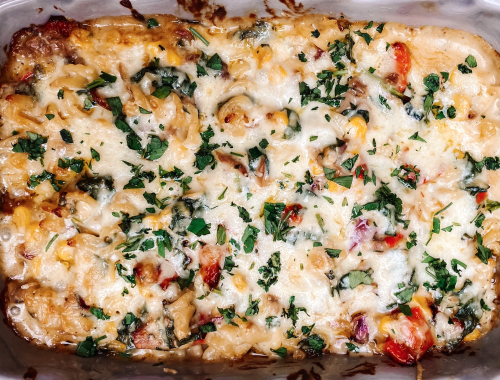
Pasta Bake – Core Recipe
1st April 2020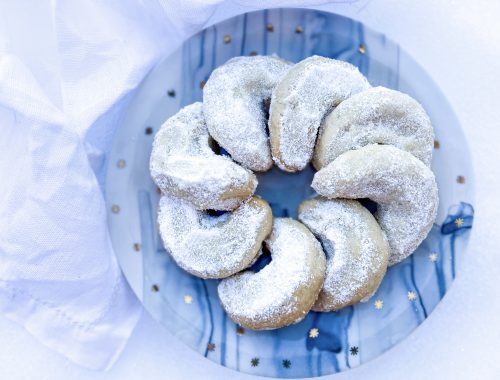
Vanillegipfeli
30th December 2021
